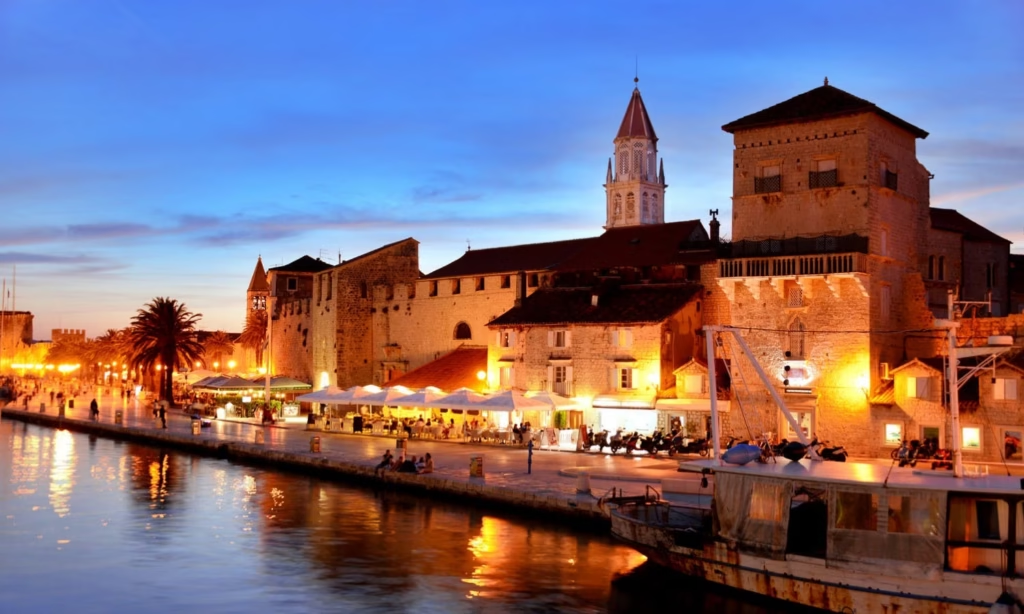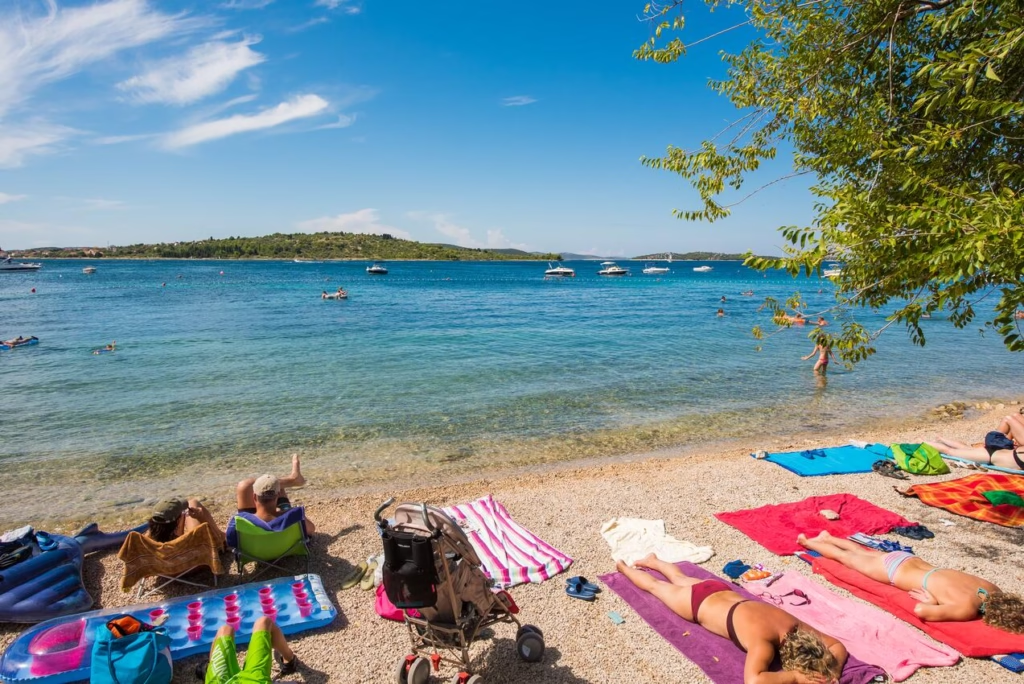Croatia is a land of rich history, stunning landscapes, and cultural treasures, drawing millions of visitors each year who seek its unique blend of tradition and modern allure. Did you know that Croatia boasts 10 UNESCO World Heritage Sites? These historical gems include ancient cities, natural wonders, and architectural marvels that captivate visitors from around the globe. Whether you’re a history buff or a nature lover, Croatia’s UNESCO sites offer something extraordinary. Let’s explore the must-visit locations and uncover their unique stories.

Table of Contents
ToggleThe Ancient Splendor of Croatia’s UNESCO Sites
Croatia’s UNESCO World Heritage Sites are a testament to its rich history and diverse culture. From ancient Roman ruins to medieval towns and natural parks, each site provides a glimpse into the country’s fascinating past. Below is a comprehensive guide, highlighting the historical, natural, and architectural wonders of these iconic destinations.
Historical Gems to Explore
Trogir – A Timeless Town
Trogir, often called an “open-air museum,” is a perfectly preserved medieval town that dates back to the 3rd century BC. What sets Trogir apart is its seamless blend of Greek, Roman, and Venetian influences, reflected in its architectural styles and cultural heritage. Its strategic location on a small island further adds to its charm, making it a unique historical gem in Croatia. Its narrow cobblestone streets, Renaissance buildings, and ancient city walls make it a treasure trove for history enthusiasts. Highlights include:
The Cathedral of St. Lawrence, a masterpiece of Romanesque-Gothic architecture.
The Kamerlengo Fortress, offering breathtaking views of the Adriatic Sea.
The bustling waterfront promenade, ideal for a leisurely stroll.
Dubrovnik – The Pearl of the Adriatic
Dubrovnik, a city of unparalleled beauty, is famed for its massive stone walls and well-preserved Old Town. This iconic destination inspired the setting of King’s Landing in “Game of Thrones.” Key attractions include:
The Stradun, the main street lined with historic buildings.
The Walls of Dubrovnik, stretching 2 kilometers and offering panoramic views.
The Rector’s Palace, showcasing Gothic, Renaissance, and Baroque elements.
Poreč’s Euphrasian Basilica
The Euphrasian Basilica in Poreč is a stunning example of early Byzantine art and architecture. Built in the 6th century, it features magnificent mosaics and intricate designs. Visitors can:
Admire the shimmering gold mosaics depicting biblical scenes.
Explore the church’s atrium and baptistery.
Climb the bell tower for panoramic views of Poreč.
Zadar’s St. Donatus Church and Roman Forum
Zadar’s St. Donatus Church, built in the 9th century, is a symbol of pre-Romanesque architecture. Adjacent to it lies the Roman Forum, an open-air archaeological site. Visitors can:
Discover ancient Roman columns and remnants of temples.
Attend concerts in the church for a blend of history and music.
Stroll through Zadar’s Old Town, rich in history and charm.
Nature’s Wonders
Plitvice Lakes National Park
A true natural paradise, Plitvice Lakes is Croatia’s oldest and largest national park. Known for its cascading waterfalls, crystal-clear lakes, and lush forests, this UNESCO site is a haven for nature lovers. Activities to enjoy include:
Walking along wooden boardwalks over turquoise waters.
Spotting diverse wildlife, including deer and rare bird species.
Taking a scenic boat ride across Lake Kozjak.
Stari Grad Plain
The Stari Grad Plain on the island of Hvar is an agricultural landscape that dates back to the Greek colonization in the 4th century BC. It remains a living testament to ancient farming practices. Visitors can:
Wander through fields of lavender, olive trees, and vineyards.
Learn about sustainable agriculture methods passed down for generations.
Enjoy wine tasting sessions featuring locally produced wines.
Paklenica National Park
Paklenica is a haven for adventure seekers, with its dramatic canyons, towering cliffs, and rich biodiversity. Visitors can:
Hike through Velika and Mala Paklenica canyons.
Explore caves such as Manita Peć.
Rock climb on some of Europe’s best climbing routes.
Architectural Marvels
Diocletian’s Palace in Split
This iconic Roman palace, built for Emperor Diocletian, forms the heart of Split’s vibrant Old Town. The palace is not just a historical monument but also a living space filled with shops, restaurants, and homes. Must-see spots include:
The Peristyle Square, a stunning open court.
The Temple of Jupiter, showcasing Roman architecture.
The Basement Halls, where scenes from “Game of Thrones” were filmed.
Šibenik’s St. James Cathedral
This architectural gem, constructed entirely of stone, is a unique blend of Gothic and Renaissance styles. Highlights include:
The intricate stone carvings of 71 human faces.
The beautifully detailed dome and façade.
The serene interior, perfect for quiet reflection, located in the heart of Šibenik.
Stečeci Medieval Tombstones Graveyards
These unique medieval tombstones, known as stečeci, are scattered across Bosnia, Herzegovina, and Croatia. In Croatia, they can be found in several locations, such as Cista Velika and Konavle. Highlights include:
Intricate carvings of religious and social motifs.
Insight into medieval funerary practices.
Stunning rural settings that enhance their historical appeal.
Practical Tips for Visitors
When to Visit
The best time to explore Croatia’s UNESCO sites is during spring (April to June) and autumn (September to October), when the weather is mild, with sunny days and cooler evenings perfect for sightseeing. These seasons offer pleasant weather and fewer crowds.
How to Get Around
By Car: Ideal for flexibility and exploring remote locations.
By Public Transport: Buses and ferries connect major cities and islands.
By Guided Tours: A hassle-free way to learn in-depth details about each site.
Entry Fees and Accessibility
Most sites charge a nominal entry fee, with discounts for children and students.
Many locations are wheelchair accessible; however, some areas, like Dubrovnik’s walls, involve steep climbs.
FAQs about Croatia’s UNESCO Sites
How many UNESCO World Heritage Sites are in Croatia?
Croatia is home to 10 UNESCO World Heritage Sites, including natural parks, ancient ruins, and historic towns.
Which UNESCO site in Croatia is the most visited?
Dubrovnik is the most visited UNESCO site in Croatia, attracting millions of tourists annually.
Are guided tours available at these sites?
Yes, guided tours are available at most UNESCO sites, offering in-depth insights and historical context.
Can I visit multiple UNESCO sites in one trip?
Absolutely! Croatia’s compact size and efficient transportation make it easy to visit several UNESCO sites during a single trip.
Conclusion
Croatia’s UNESCO World Heritage Sites showcase the perfect blend of history, culture, and nature. From the medieval streets of Trogir to the cascading waterfalls of Plitvice Lakes, each site offers a unique experience that leaves a lasting impression on visitors. From the ancient streets of Trogir and Dubrovnik to the breathtaking landscapes of Plitvice Lakes, each site tells a unique story. Plan your visit today and immerse yourself in the wonders of this remarkable country!
Disclosure: This page may contain affiliate links. This means that we get a small commission from any purchase you make, at no additional cost to you!

